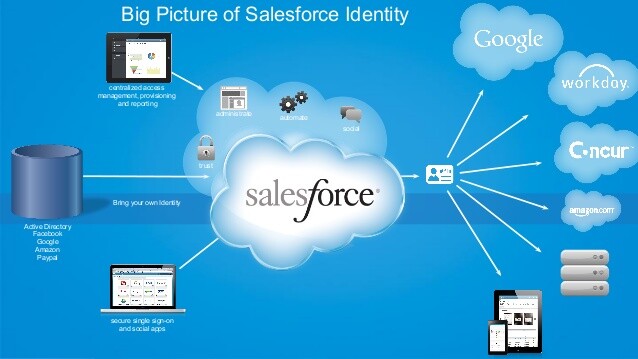As marketers and any digital business are well aware, today, everything is about the customer experience. Delivering a smooth, enjoyable experience is critical when it comes to increasing conversion rates and improving the bottom line, so tools that aid the process are incredibly valuable, which has led to the rise of Salesforce (aka the “Customer Success Platform”).
However, simply possessing Salesforce doesn’t guarantee the enhanced experience businesses are looking to deliver, since the program is only as useful as the data marketers feed it—and not all customer data lives in Salesforce. For many companies, data resides in backend systems and data sources beyond Salesforce, like Oracle, Hadoop, Amazon Redshift and other applications.
For that reason, IT architects spent years trying to conquer the challenge of creating real-time connections across numerous siloed applications. Naturally, C-Suiters weren’t thrilled about this, since most companies want their IT departments focused on delivering innovation, not integration. So when Salesforce Connect was introduced, two years ago, it proved to be a game changer, revolutionizing real-time integration by treating live, external data as native objects.
While Salesforce Connect has lived up to the hype, it’s clear that there are still plenty of people who have yet to completely understand and take advantage of its benefits. Given that Dreamforce ’16 is just around the corner, now is the time for those unfamiliar with the technology to review the basics of data integration and how to properly take advantage of Salesforce Connect.
The History of Data Integration
In order to truly comprehend why Salesforce Connect has proven to be so revolutionary, it is critical to understand the history of data integration. Traditional data integration, or ETL (extract, transform and load), requires moving, copying and synchronizing data. The challenge with this strategy is integrating large volumes of data that may be out of date before the process is finished.
Companies tried to get around the problem by developing projects to build web service callouts from Salesforce and bridge them together with middleware. However, this requires a significant amount of developer resources, which again isn’t ideal since in today’s digital era, IT departments need to prioritize innovation over support.
So IT departments were stuck: both strategies are outside the realm of the Salesforce CRM group, which felt pressure to deliver data-driven features to their Salesforce users, and more importantly, these approaches inhibit the Salesforce team’s ability to be agile with changes because of dependency on outside teams.
Then in 2014, Salesforce Connect came on the scene. An integration strategy using industry standard Open Data Protocol (OData), Salesforce Connect provides a way for any external data to be integrated into Salesforce, as long as the data is accessible via OData.
So what’s the current challenge? Salesforce Connect by itself does not provide the required OData connectivity needed to integrate data, nor do outside applications provide native support for it. As such, in addition to Salesforce Connect, companies need a solution that exposes outside data in an OData-compatible way.
Selecting a Connectivity Solution
While OData may still prove to be a challenge for some, we’ve come a long way since Salesforce Connect was first introduced, and now, there are a variety of real-time OData connectivity solutions companies can choose from to ensure a smooth integration process. When evaluating solutions, a few attributes and questions you should analyze include:
- Enterprise-ready Security: Can the solution run reliably and securely within a large organization today?
- Easy to use: Is the interface easy to understand and use by current staff? Can Salesforce administrators use it, or do you need a specialist to code the setup?
- Scalability: Can the solution handle thousands of concurrent connections and large volumes of data without latency?
- Database support: Does the solution support a wide range of Oracle applications and database version to prevent implementation delays and future-proof data integration?
- Impact on existing systems: Does the solution require changes to the infrastructure or underlying databases or additional software to be installed?
By implementing a direct connectivity solution, companies no longer need to rely as heavily on IT departments to oversee their data, and marketers have more leeway to utilize that data to impact the customer journey. Certainly, we’ll see plenty of new innovations came out of Dreamforce ’16, but even so, it’s clear that tools like Salesforce Connect are here to stay, so it’s time for marketers and IT departments alike to get on board so both parties can spend more time making quality contributions to their businesses.
What’s next to properly leverage Salesforce Connect?
Salesforce Lightning Connect was the original release name at launch in Winter ’14, and there were two common features many organizations wanted before adoption. The first was read/write support for external objects, and this was introduced last year in time for Dreamforce ‘15. Second, and arguably the most interesting, is support for external objects for use in Salesforce Reporting. The preview for this feature is available now and it’s targeted for release in Winter ’17.
And to further push the limits on external objects, I’m excited to present a session at Dreamforce ’16 titled, “External Objects for External Big Data Platforms,” at 9:15am on Tuesday, October 4.

